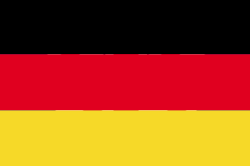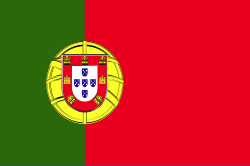Sections
- Environmental compliance
- Wastewater and other waste
- Chemicals
- Social/Labor
- Energy usage
- Water usage
- Hide Traceability
Section 1: Environmental Compliance
How are Tanneries Regulated for Environmental Responsibility?
Tanneries are regulated under governments for compliance to all environmental standards as well as to international regulations via 3rd parties and customer audits. Most tanneries are very transparent about their compliance data and openly share that information with their customers.
How do we Know if a Tannery is Environmentally Compliant?
Multiple 3rd party programs provide transparency on whether a tannery has environmental compliance with government and 3rd party regulations. Third party governance programs include the Leather Working Group (LWG), Brazil has Sustainability Certification to tanneries and the Institute of Quality Certification for the Leather Sector (I.CE.C) operates in Italy.
Section 2: Wastewater and Other Waste
Do Tanneries have Wastewater Treatment Plants?
Yes, most tanneries either run their own wastewater treatment plant or send their wastewater to an industrial or municipal run wastewater treatment plant. To learn more about the leather industry’s wastewater treatment plants see the UNIDO article on the treatment of tannery effluents together with the IULTCS-IUE recommendations.
How do Tanneries Manage Solid and Liquid Waste?
All modern tanneries run or discharge to wastewater treatment systems to treat their liquid waste. Solids waste is managed according to government protocols and best in class tanneries are working towards creating circular waste streams that provide new materials or energy sources from their solid waste.
Section 3: Chemicals
Do Tanneries use Chrome VI?
Chrome VI is not used in tanning. Chrome III is used in tanning (it is found in nature and is an important nutrient for humans – it is recommended in small amounts in water & food). Proper processing eliminates the risk of any chrome VI formation.
What is ZDHC in Tanneries?
ZDHC stands for Zero Discharge of Hazardous Chemicals. ZDHC is a non-governmental program which established rules to eliminate hazardous chemicals in textile and leather processing. Over 100 global brands and many suppliers to the leather industry have become contributors to the ZDHC program and are enforcing ZDHC regulations with their supply chains.
Does Leather Production still use Toxic Materials like Mercury, Arsenic, Phenol and Formaldehyde?
Mercury, Arsenic, Phenol and Formaldehyde are not used in the tannery. Formaldehyde and phenol may be used by chemical suppliers in chemical synthesis to make safe quality tanning agents that are very highly regulated.
Today major leather producers must comply with all major chemical legal regulations with regard to the use of restricted chemical substances. Regulations such as the EU-REACH directives and the ZDHC manufacturing restricted substance list, called MRSL.
A MRSL is a list of chemical substances established by ZDHC which are not allowed to be used in chemical products for leather manufacture. ZDHC is a global NGO run by stakeholders coming from global brands, universities, manufacturers and testing institutes trying to reduce the discharge of hazardous chemicals.
Do Tanneries still use Toxic Solvents?
The use of solvents in tanneries is very low. While solvents were commonly used in the past for degreasing and finishing (coating) of leather these processes have all been switched to water-based technologies. The few amounts of solvents still in use are not considered hazardous as all solvent containing air from coating operations is run through a scrubber where it is captured and is not emitted to the environment.
What is Restricted Substances List (RSL)?
Legislators, eco labels, brands and NGO run organizations establish lists of chemical substances which are restricted for intentional use in leather manufacturing or the final leather product. These substances are called restricted substances due to their hazardous properties. For more information see https://www.roadmaptozero.com/
What are Manufacturing Restricted Substances Lists (MRSLs)?
These are lists of chemicals substances which should not be intentionally used in chemical products during leather manufacture. For example, ZDHC has a MRSL list which is the most commonly recognized MRSL list in the leather industry.
How does Leather Compare to the Textile Industry Regarding Restricted Substances?
Compared to the leather industry, the textile industry is dealing with a higher number of restricted substances. The leather industry is more advanced in phasing out ZDHC listed restricted substances from its manufacturing.
Do Tanneries Recycle Chemicals?
Chemical products are generally not recycled but many chemical formulations in tanneries are reused during the process to limit their discharge and reduce cost. Chemical products that have not been completely used up during leather manufacture will remain in the final wastewater which is specially treated in wastewater treatment plants. Ideally chemical products used in leather manufacture should biodegrade.
Section 4: Social & Labour
How are Leather Workers Protected Inside the Tanneries?
Since tanneries in the past often did not ensure proper working conditions these issues become a focus of legislators and environmental NGO’s. This led to significant improvements and it is safe to say that responsible tanneries nowadays practice a very high level of operational safety. Workers are trained in handling chemicals and operating machines in a safe way. Regular audits done by various organizations (i.e. LWG, CCIB, etc.) ensure high standards are maintained. Modern tannery machines are equipped with state-of-the-art safety devices, and employees are required to wear personal protective equipment (safety gloves and shoes, goggles, breathing masks) when handling chemicals. UNIDO has also launched an online safety awareness training program, which includes video demonstrations of how to employ safe practices for specific chemicals used in tanneries.
Are Tanneries Automated?
Leather manufacture is known for its craftmanship, and historically significant manual work was involved. However, this has changed a lot over the past 20 years. Many mechanical operations and the handling and dosing of chemicals has become automated. The larger tanneries around the world have become automated in the last 10 years and are now running state-of-the-art operations with highly efficient use of resources and levels of environmental compliance that go beyond many regulations.
Are Tanneries Dangerous Places?
Tanneries are places where chemicals are processed into leather; most of them have a high level of safety and occupational health programs in place. Employees are constantly being trained to perform safe activities. Tanneries also need to comply with local, state and federal regulations. If those risks are properly managed and safety efforts undertaken, then a tannery is no riskier than other chemical manufacturing facility.
Section 5: Energy Use
What is Leather’s Carbon Footprint?
The process of calculating leather’s carbon footprint has been controversial due to the hides connection with the meat industry. Currently, there is no single methodology on an internationally agreed standard for leather’s product footprint. In 2018 the EU’s Environmental Footprint Steering Committee published rules about how to calculate the impact of leather manufacturing using LifeCycle Assessment methodology. This allows tanners to calculate their footprint using harmonized established rules, taking into account the fact that leather is a by-product of the meat and dairy industries.
Section 6: Water Usage
Leather and Water Usage?
Water is essential for leather production. Manufacturing leather currently involves a system of water-based processes, utilizing water as the transport medium and diluent for the chemicals required. The water consumption of leather manufacturers is an important topic audited in protocols from the Leather Working Group and the like.
Section 7: Hide Traceability
How Can I Track my Leather Supply Chain?
The Leather Working Group (LWG) runs a traceability audit on all LWG audited tanners to assess a supplier’s ability to be able to trace their raw material back to the slaughterhouse. This information is not only available to customers of the tannery but also to end consumers on the LWG website. The Institute of Quality Certification for the Leather Sector in Italy runs a comprehensive certification programme and more information can be found on its website, www.icec.it. CSCB is the Brazilian Leather Certification for Sustainability, more details can be found on www.cicb.org.br together with background on the Brazilian leather industry.
Leather and the Meat Industry, What is the Connection?
Leather from cattle, sheep, goat and pig are a by-product of the meat industry. 98% of the leathers are made from these four animals. Farmers do not raise cattle for their hides to turn into leather as the value of a steer/cow hide is generally only approximately 1-2% of the total animal’s value. Farmers raise cattle for their meat or milk with the hide as a by-product that must be turned into another value-added product or eaten. Leather is currently the best way to up-cycle hides and skins from the meat industry; every year it not only saves around 7.3 million tonnes from global landfill, but is versatile enough to be used in a range of products from soft gloves to comfortable footwear, to hard wearing furniture and contemporary clothing.
Learn more with Leather Naturally
Leather Naturally promotes the use of globally-manufactured sustainable leather. Its website www.leathernaturally.org is a key resource for information about modern leather manufacturing and the part it plays in a more sustainable society.





